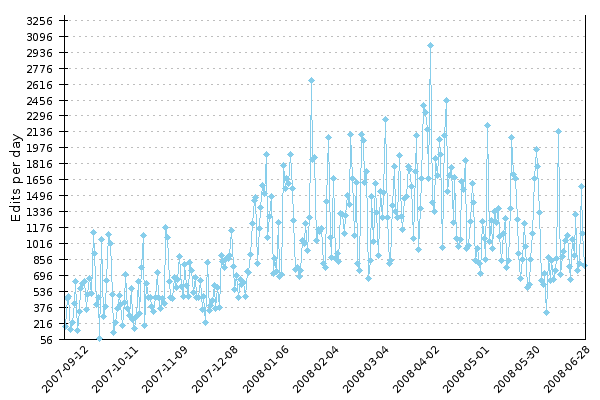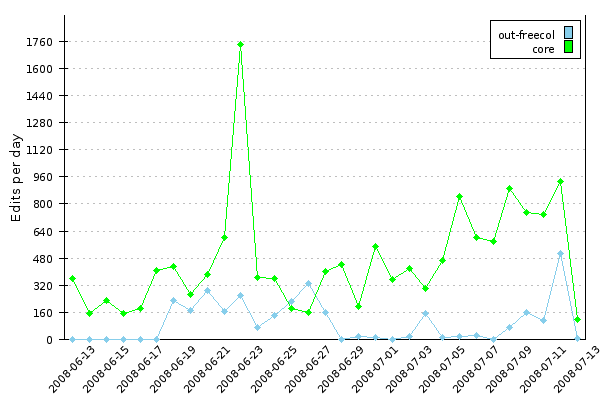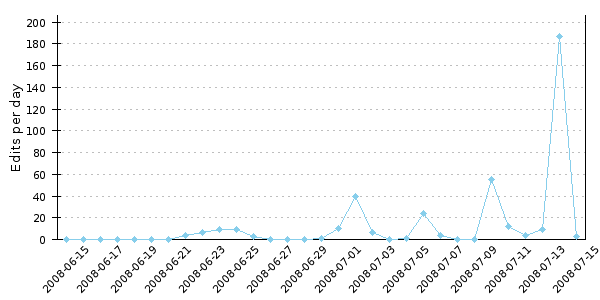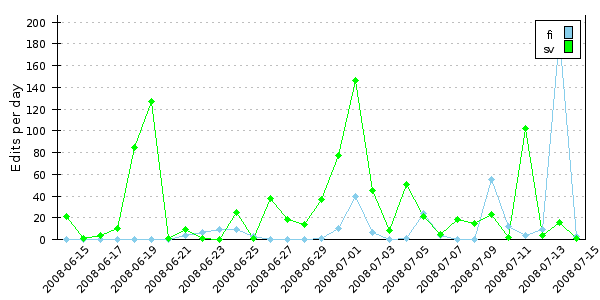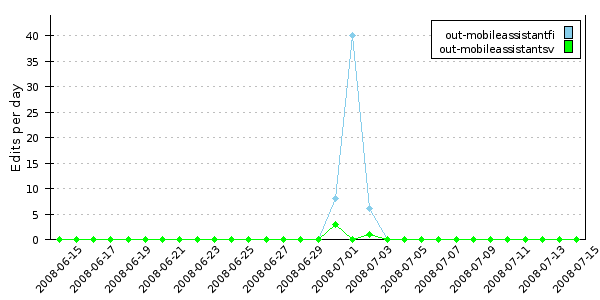Tämä postaus sisältää avautumista SELinuxista ja salasanoista, kiinnostumattomat ohittakoon.
Sainpa tällä viikolla parin viivytyksen jälkeen uuden kannettavan. Tällä kertaa juuri tätä sanaa kehtaa koneesta käyttää, se on nimittäin Thinkpad X200s, jota voisi kuvailla sanoin laajakuva, kevyt ja akkukin kestää. Edelliselle koneelle kävikin vähän huonosti.
Aika onkin tässä kulunut hyvin sijaistekemiseen kuten saksan kertaukseen saksankielisen käyttöjärjestelmän avulla ja Linuxin asentamiseen. Distroksi tuli tällä kertaa rakastettu ja vihattu Fedora numero 10. Melkein kaikki toimii, mutta jotain viilattavaa vielä on. Kirkkaudensäätönapit toimivat, paitsi ne eivät muuta kirkkautta. Siihen on onneksi helppo kiertoratkaisu. Sormenjälkilukijalle ei vielä kuulemma ole ajureita, eikä kyllä oikein kiinnostakaan. Jotain vikaa Guidancessa on kun se haluaa pistää konetta nukkumaan vähän väliä, eikä sen ”napsauta tästä, jos et halua” ironisesti tietystikään toimi.
Niin, mikä sitten on niin vaikeata? No tulostaminen. Käytössä oleva lasertulostin pitäisi toimia foo2qpdl-ajurilla, mutta heidän ”kaikki distrot ei osaa” -asenne ja käsin pakettien asentaminen ei kirjoittajaa kiihota. Onneksi vaihtoehtona onkin Samsungin suljetut ajurit, jotka sää kätevästi netistä. Asentaminen on helppoa ja tulostinkin on valmiiksi paikallaan. Eipä sitten kuin tulostamaan! Tai sitten ei – jälki on sen näköistä ettei tulosteista saa mitään selvää. Siinäpä sitten ihmetellään puoli iltaa miksei se nyt vaan toimi. Lopulta syyksi paljastuu SELinux. Sitten koitetaan toiset puolet illasta korjata tätä ”turvasysteemiä”. Arvaatteko mikä oli lopputulos? Kyllä, **kankkulan kaivoonhan se lähti.
Fedorassa tulee ajatukseltaan aivan loistava apuohjelma, joka ilmoittaa SELinuxin estämistä tapahtumista. Näppärää, eikö. Sen lisäksi, että tämä ihana toiminnallisuus vaatii suorittimen herättämistä monta kertaa sekunnissa, se ei ole käyttökelpoinen. Virheilmoitukset ovat hepreaa (tässä tapauksessa tietoturvanörttihippienglantia), joista ainakaan minä en tajua juuri mitään, saati sitten ns. tavallinen käyttäjä. Ohjelma tarjoaa ”korjauskomentoa”, mutta jättää kertomatta missä hakemistossa se pitää ajaa. On myös mahdollista pyytää ohjelmaa suorittamaan se itse, mutta se toiminto onkin valikoissa harmaalla – miksi? No pienen tutkimustyön jälkeen selviää, että ohjelman asetustiedostosta pitää määritellä käyttäjät, jotka saavat näitä ajaa. Näin määritellyt käyttäjät saavat ajaa näitä komentoja pääkäyttäjän oikeuksin. Näppärää, eikö? Ehkä viime vuosisadalla, nykyään pitäisi policykittien ja minkä lie taustaprosessien mahdollistaa oikeiden pyytäminen ilman tämmöistä säätöä. Ainiin, ja se ei muuten toimi! Lisäksi asetustiedoston uumenissa on asetus, saako noita komentoja ylipäätänsä ajaa. No muutetaanpas sekin ja käynnistetään uudelleen, kun tätä hienoa ohjelmaa ei tunnu muuten saavan käynnistettyä uudelleen. No eipä toimi vieläkään, ja lopputuloksen jo kerroin.
Monen monta kertaa kun tietokoneen päivän aikana joutuu käynnistämään, niin palaa hermo jos kullakin, kun pitää niitä salasanoja kirjoitella. Mutta kyllähän tekniikan kehitys on tietysti auttanut tässäkin ongelmassa ja tehnyt siitä helpompaa. No ei ainakaan minulla kohdalla – joudun kirjoittamaan kuusi sala- tai tunnussanaa aina kun käynnistän koneeni.
- Salattujen osioiden avaaminen
- Sisäänkirjautuminen
- Gnomen lompakkopalvelu NetworkManageria varten
- Ssh-avaimen avaus agentille
- Firefoxin ns. pääsalasana
- Kde:n lompakkopalvelu Akregatorin syötteitä varten
Edellisellä koneellani tilanne oli melkein yhtä paha, kohdat 1 ja 3 puuttuivat. Lisäksi voisi kuvitella joillain käyttäjillä olevan vielä erikseen Biossissa salasana. Lisäksi melkein kaikki salasanankyselijät keskeyttävät muun työskentelyn, ainakin kyseisessä ohjelmassa, kunnes salasana on annettu. Firefox on vielä tässä suhteessa vallan mainio, koska se avaa niin monta dialogia kun se haluaa salasanoja. Toisin sanoen pitää odottaa, että kaikki session sivut ovat latautuneet, näpyttää salasana kiltisti siihen uusimaan dialogiin ja näpytellä muut pois enterillä.
Pyyntönti kuuluukin: I can has integration KTHXBYE?
 Google Plus
Google Plus LinkedIn
LinkedIn Skype
Skype Twitter
Twitter